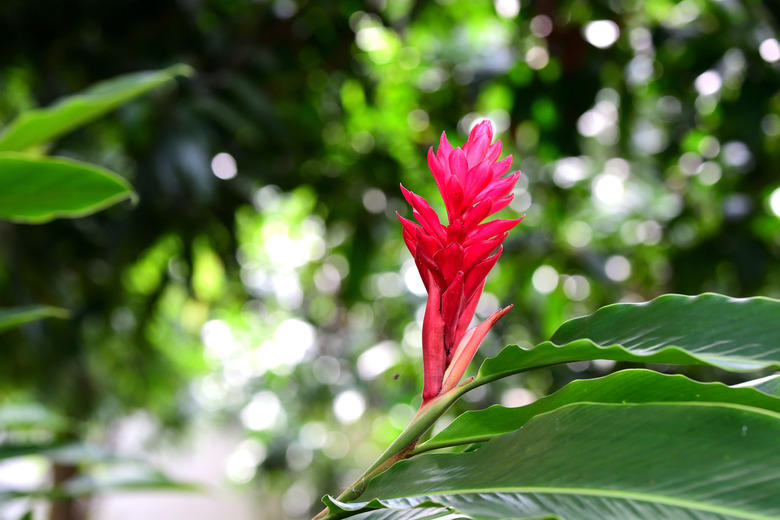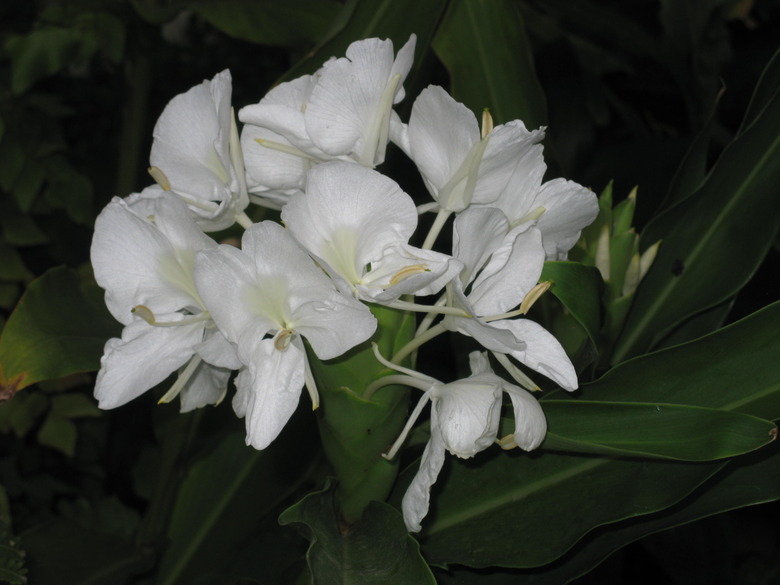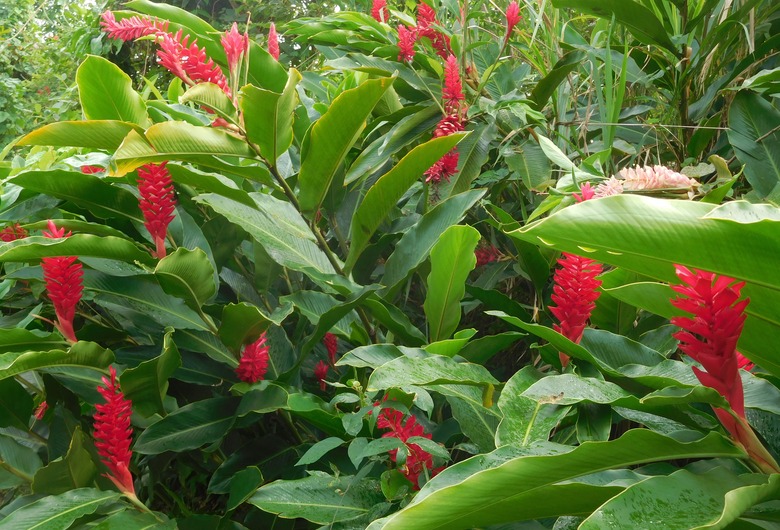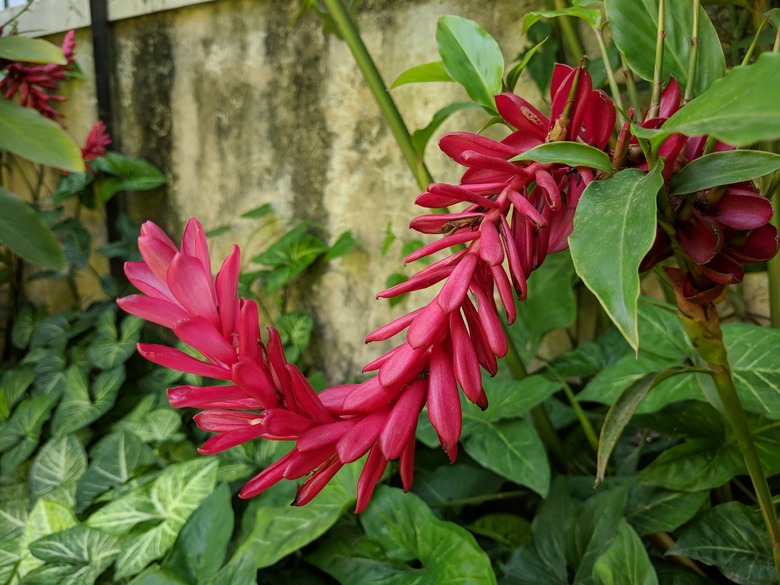Care For Hawaiian Ginger Plants
Growing rampantly in the grasslands and upland forests of the Big Island of Hawaii and other Hawaiian islands, ginger lily (Hedychium spp.) has highly scented flowers perched atop 5-foot-tall stems.
While some might call this ginger plant "Hawaiian ginger," there is another popular ginger of a completely different genus. It is Hawaiian red ginger (Alpinia purpurata), which has bright red floral bracts but inconspicuous white flowers.
Both are tropical plants with similar growing requirements, and both propagate via underground rhizomes that readily spread to create large clumps.
Ginger Lily
The various species in the Hedychium genus, part of the Zingiberaceae family, are generally known as ginger lilies. Among the most popular is white ginger lily, also called butterfly ginger (Hedychium coronarium), with its pure white flowers.
Growing in USDA hardiness zones 8 to 10, various species offer a wide range of colored flowers, including peach, white, yellow and orange. Another popular variety called scarlet ginger lily (Hedychium coccineum) has deep red-orange blooms.
Tip
While ginger lilies are called lilies, they are not true lilies but are cousins of the edible ginger root plant.
Ginger lilies are frequently used in Hawaiian leis, although their flowers are not long-lived after they are cut. Grow ginger lilies not only to enjoy their fragrance and beauty but also to attract pollinating insects, including hummingbirds and butterflies.
Hawaiian Red Ginger
The red ginger plant has entirely different-looking flowers than the ginger lily, but like it, red ginger has naturalized and grows in the valleys and on the windward side of most Hawaiian islands. Although it is called "red ginger," there is also a pink ginger variety.
You might also recognize it under some other common names including fire ginger, ostrich plume or its evocative Hawaiian name, 'awapuhi 'ula'ula.
This variety of ginger produces flowers that appear as spikes from 6 to 12 inches long with bracts that overlap to resemble a cone shape. Like some other plants with showy bracts, many people refer to these as the flowers, but the actual flowers are inconsequential.
Ginger Flower Care
Ginger plants can grow in full sun or partial shade but cannot tolerate heavy shade. They require plenty of moisture and grow best in rich, well-draining soils.
Temperature
As a tropical flower, ginger appreciates a temperature that is consistently above 60°F. If the temperature drops below 50°F, growth slows and flowers may not open.
Fertilizer and Irrigation
Ginger is a heavy feeder and needs regular fertilization, ideally once a month. Unlike many other types of flowers, it flowers the most heavily when fertilized with a solution that is higher in nitrogen.
These plants require consistent moisture, so never let them dry out. If your climate experiences hot, dry summers, you may need to water them daily.
Division and Pruning
When grown outside in its hardiness zone, the foliage dies back to the ground at the end of the growing season. Allow it to remain there to protect the rhizomes. When new growth emerges in spring, cut off the old, browned leaves to provide room for the new shoots.
Tip
In zones colder than its usual hardiness zones, you can dig up the rhizomes and overwinter them.
If the clump has grown large, spring is the time to divide the rhizomes. Dig them up and divide them by cutting off sections of the rhizome, ensuring that each section has at least one eye (or bud). Replant these so they have time to develop a strong root system before the growing season ends.
References
- University of Hawaii Extension Program: Ornamental Ginger, Red and Pink
- University of Florida IFAS Extension: What Can You Tell Me About the Red Hawaiian Ginger Plant?
- Duke University: Fall Plant Sale, Ginger Lily
- Clemson University: Ginger Lily
- University of Florida IFAS Extension: Ginger Lily Adds Fragrance and a Tropical Flair to North Florida Gardens



